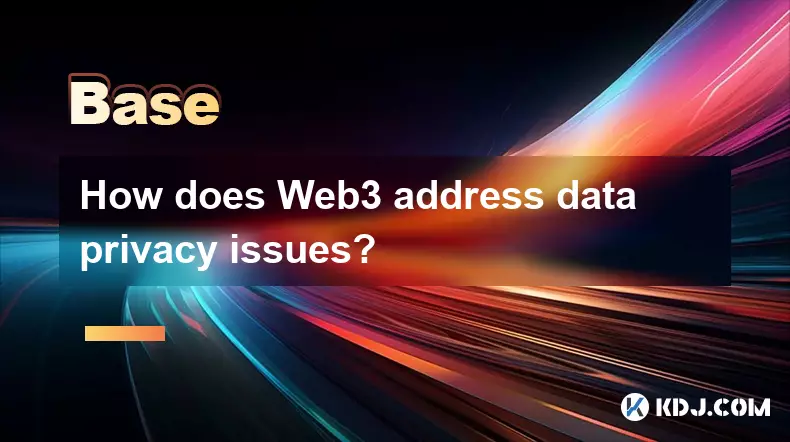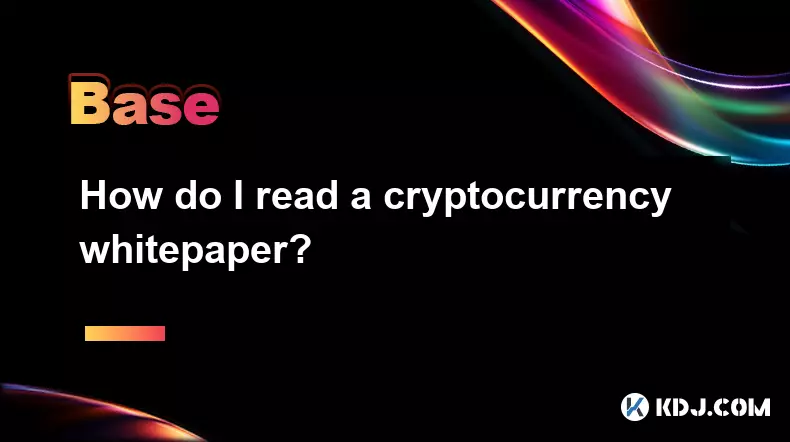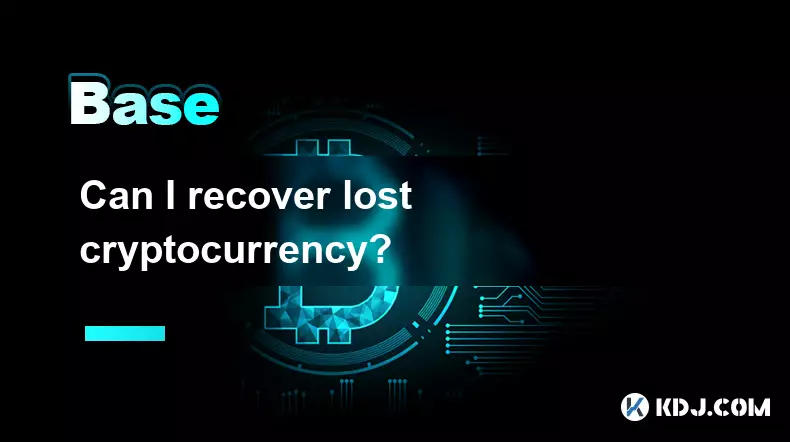-
 bitcoin
bitcoin $114320.977035 USD
-0.40% -
 ethereum
ethereum $4152.439985 USD
-1.75% -
 tether
tether $1.000111 USD
-0.04% -
 xrp
xrp $2.843037 USD
-1.63% -
 bnb
bnb $1013.349380 USD
-1.62% -
 solana
solana $208.362767 USD
-2.10% -
 usd-coin
usd-coin $0.999783 USD
0.00% -
 dogecoin
dogecoin $0.232559 USD
-1.00% -
 tron
tron $0.333491 USD
-1.09% -
 cardano
cardano $0.806310 USD
0.19% -
 hyperliquid
hyperliquid $45.023720 USD
-1.59% -
 ethena-usde
ethena-usde $1.000819 USD
-0.06% -
 chainlink
chainlink $21.241249 USD
-2.11% -
 avalanche
avalanche $30.035416 USD
-0.66% -
 stellar
stellar $0.364984 USD
-2.05%
How does Web3 address data privacy issues?
Web3 empowers users with self-sovereign identity, enabling secure, private, and portable digital identities through DIDs, zero-knowledge proofs, and blockchain-based control.
Sep 30, 2025 at 07:01 am

Decentralized Identity Management in Web3
1. In Web3, users maintain control over their digital identities through self-sovereign identity (SSI) frameworks. Unlike traditional platforms where personal information is stored on centralized servers, individuals store identity data in encrypted wallets they fully own.
2. Authentication occurs through cryptographic proofs rather than exposing raw data. For instance, a user can prove they are over 18 without revealing their actual birthdate, minimizing unnecessary data exposure.
3. Decentralized identifiers (DIDs) replace conventional usernames and passwords. These identifiers are registered on public blockchains, enabling trustless verification while reducing reliance on third-party authentication services.
4. Users grant selective access to their identity attributes using zero-knowledge proofs and verifiable credentials. This ensures that only the necessary information is shared for a specific transaction or service.
5. Since there is no central repository of user data, the risk of large-scale data breaches is significantly reduced. Even if one node is compromised, attackers cannot reconstruct full user profiles due to fragmented storage across the network.
Data Ownership and User Consent
1. Web3 shifts the paradigm from platform-owned data to user-owned data. Every piece of personal information generated—such as transaction history, social interactions, or preferences—is tied directly to the user’s wallet address.
2. Smart contracts enforce consent mechanisms transparently. When a decentralized application (dApp) requests access to certain data, the terms are codified into immutable logic, eliminating hidden clauses or unilateral changes by service providers.
3. Users can revoke access at any time by interacting with the smart contract, ensuring dynamic control over how their data is used. This contrasts sharply with current Web2 models where revoking permissions often requires navigating complex settings or submitting formal requests.
4. Data portability is inherent in Web3 architecture. Individuals can move their verified credentials and behavioral history across dApps without re-verification, promoting competition and reducing vendor lock-in.
This model empowers users to monetize their own data selectively, choosing when and with whom to share it—often in exchange for tokens or enhanced services.Encryption and On-Chain Privacy Solutions
1. While public blockchains record transactions immutably, advanced cryptographic techniques protect sensitive details. Protocols like zk-SNARKs and zk-STARKs enable validation of transactions without disclosing sender, receiver, or amount.
2. Layer-2 solutions such as rollups integrate privacy-preserving computations off-chain before settling results on the mainnet. This reduces exposure while maintaining scalability and auditability.
3. Projects like Aztec and Secret Network offer private smart contracts, allowing developers to build dApps where input data remains encrypted during execution. This prevents inference attacks based on observable behavior patterns.
4. Peer-to-peer networks like IPFS and Filecoin store user files in distributed fragments, encrypting them end-to-end. Only those with decryption keys—typically the user or authorized parties—can reconstruct the original content.
5. Wallet interfaces now include privacy dashboards, giving real-time visibility into which dApps have accessed what data and enabling immediate revocation through simple blockchain transactions.
Frequently Asked Questions
How do zero-knowledge proofs enhance privacy in cryptocurrency transactions?Zero-knowledge proofs allow one party to prove the validity of a statement without revealing the statement itself. In crypto, this means confirming a transaction is legitimate without exposing the sender, receiver, or amount, preserving confidentiality while ensuring security.
Can governments regulate decentralized identity systems?While governments can impose compliance requirements on entities interfacing with Web3 systems—such as exchanges or custodial wallets—they cannot directly alter decentralized protocols. However, legal frameworks may require certain verifications for regulated services, balancing privacy with anti-money laundering (AML) obligations.
What happens if a user loses their private key in a self-sovereign identity system?Losing a private key typically results in permanent loss of access to identity data and associated assets. Some systems incorporate social recovery mechanisms, where trusted contacts help regenerate access, but these must be carefully designed to avoid creating new attack vectors.
Are all Web3 applications inherently private?No. Public blockchains are transparent by design, meaning transaction metadata is visible to anyone. True privacy requires additional layers such as encrypted messaging, private computation, or anonymity-focused networks. Users must choose tools and dApps that explicitly prioritize privacy features.
Disclaimer:info@kdj.com
The information provided is not trading advice. kdj.com does not assume any responsibility for any investments made based on the information provided in this article. Cryptocurrencies are highly volatile and it is highly recommended that you invest with caution after thorough research!
If you believe that the content used on this website infringes your copyright, please contact us immediately (info@kdj.com) and we will delete it promptly.
- BlockDAG, DOGE, HYPE Sponsorship: Crypto Trends Shaping 2025
- 2025-10-01 00:25:13
- Deutsche Börse and Circle: A StableCoin Adoption Powerhouse in Europe
- 2025-10-01 00:25:13
- BlockDAG's Presale Buzz: Is It the Crypto to Watch in October 2025?
- 2025-10-01 00:30:13
- Bitcoin, Crypto, and IQ: When Genius Meets Digital Gold?
- 2025-10-01 00:30:13
- Stablecoins, American Innovation, and Wallet Tokens: The Next Frontier
- 2025-10-01 00:35:12
- NBU, Coins, and Crypto in Ukraine: A New Yorker's Take
- 2025-10-01 00:45:14
Related knowledge

How does cryptocurrency achieve decentralization?
Sep 30,2025 at 04:37am
Understanding the Foundation of Decentralization in Cryptocurrency1. Cryptocurrency achieves decentralization primarily through the use of blockchain ...

What are some common methods of cryptocurrency market manipulation?
Sep 27,2025 at 02:55am
Wash Trading and Its Impact on Market Perception1. Wash trading involves an individual or entity simultaneously buying and selling the same cryptocurr...

How do I read a cryptocurrency whitepaper?
Sep 27,2025 at 05:54am
Understanding the Structure of a Cryptocurrency Whitepaper1. Begin by identifying the executive summary, which outlines the project’s core vision and ...

Can I recover lost cryptocurrency?
Sep 25,2025 at 08:18am
Understanding the Nature of Cryptocurrency Loss1. Cryptocurrency operates on decentralized networks, meaning there is no central authority to reverse ...

How do I choose a cryptocurrency investment strategy?
Sep 27,2025 at 03:55pm
Understanding Risk Tolerance in Crypto Investing1. Assessing personal risk tolerance is a foundational step when entering the cryptocurrency market. V...

How can I earn passive income from cryptocurrency?
Sep 23,2025 at 10:18am
Staking Cryptocurrencies for Regular Returns1. Many blockchain networks operate on a proof-of-stake (PoS) consensus mechanism, allowing users to earn ...

How does cryptocurrency achieve decentralization?
Sep 30,2025 at 04:37am
Understanding the Foundation of Decentralization in Cryptocurrency1. Cryptocurrency achieves decentralization primarily through the use of blockchain ...

What are some common methods of cryptocurrency market manipulation?
Sep 27,2025 at 02:55am
Wash Trading and Its Impact on Market Perception1. Wash trading involves an individual or entity simultaneously buying and selling the same cryptocurr...

How do I read a cryptocurrency whitepaper?
Sep 27,2025 at 05:54am
Understanding the Structure of a Cryptocurrency Whitepaper1. Begin by identifying the executive summary, which outlines the project’s core vision and ...

Can I recover lost cryptocurrency?
Sep 25,2025 at 08:18am
Understanding the Nature of Cryptocurrency Loss1. Cryptocurrency operates on decentralized networks, meaning there is no central authority to reverse ...

How do I choose a cryptocurrency investment strategy?
Sep 27,2025 at 03:55pm
Understanding Risk Tolerance in Crypto Investing1. Assessing personal risk tolerance is a foundational step when entering the cryptocurrency market. V...

How can I earn passive income from cryptocurrency?
Sep 23,2025 at 10:18am
Staking Cryptocurrencies for Regular Returns1. Many blockchain networks operate on a proof-of-stake (PoS) consensus mechanism, allowing users to earn ...
See all articles










































































